| Architect |
bBlur
Architecture |
| Date
Built |
2011 |
| Location |
Beside Slough
Railway Station |
| Description |
|
The Slough bus
station occupies a site that was formerly
home to a number of derelict offices, the
original bus station and a multi-storey car
park. It is part of a £450million
redevelopment in the vicinity of the Slough
Railway Station called the "Heart of Slough"
scheme. The architect's website says
of the development that, "It is the first phase of a
transport interchange that provides safe,
efficient and enjoyable public transport
facilities under its 70m canopy.
Secondly it defines a new street which
links the Railway Station with the town
centre so improving the pedestrian
permeability and legibility of the public
realm. ... Thirdly the sculptural form
provides a gateway building visible from
the passing mainline trains into London
Paddington."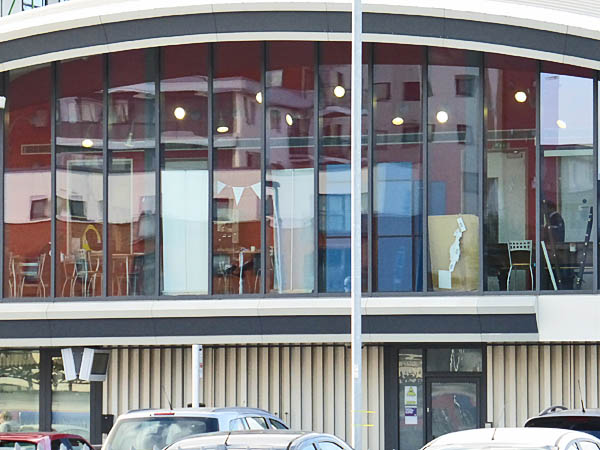 An article in World Architecture News.com on Friday September 23, 2011, describes the bus station's design as having been, " ... compared to a basking shark and a fish. ... The station itself is clad in aluminium shingles which form a rich, textured metallic surface, alternating in colour as the weather changes through the seasons. A .. canopy and pedestrian walkway form the heart of the development and offer passengers space to await the arrival of their next bus either on the covered platform or in a separate waiting room. This canopy is anchored by a 660 sq m volume with views across the neighbouring rail station, encompassing a public cafe, the interior waiting area, a newsagent, bus operator facilities, information point and ticket office." 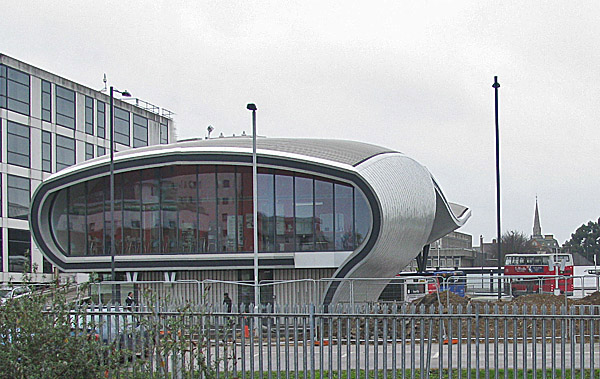 The article does point out that the design has been controversial and has drawn criticism from some quarters. One identified in the article came from Peter Daniells, from Cookham, who said that, “The wavy roof is so high that wind and rain blow in on passengers waiting below, as I’m sure the snow will do in winter. The ‘waiting room’ which is still unfinished and locked out of use, looks big enough to hold about a dozen people, and is too far from the bus stands for people to be able to see when their bus has arrived.” |
|
|
Slough
Bus Station
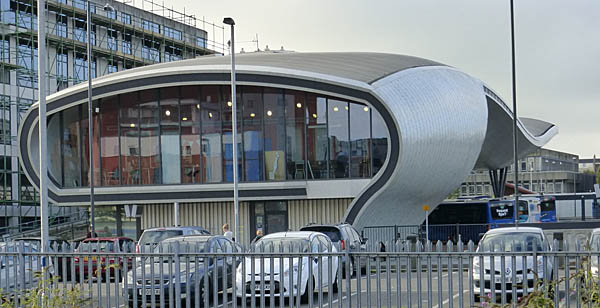 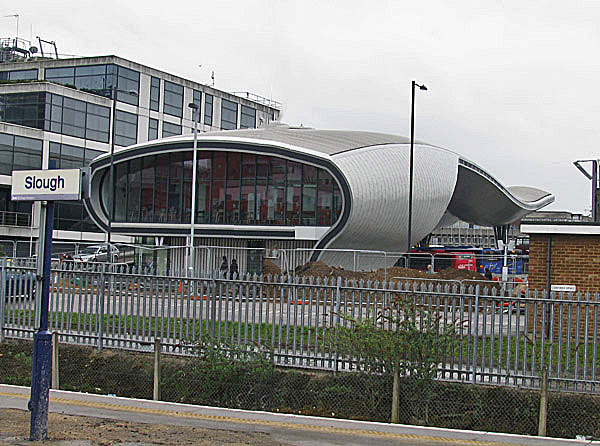  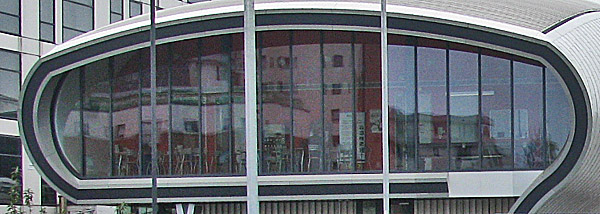 |
